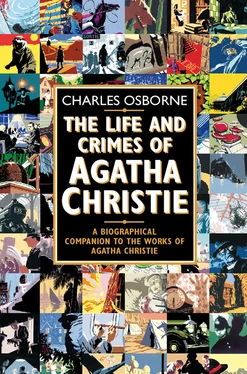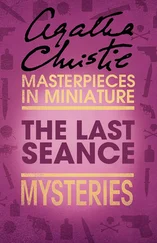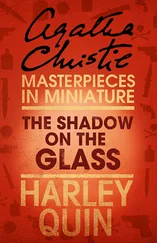Berkeley would seem here to be looking ahead to Simenon, whose first Maigret stories were soon to appear, or to writers of the type of Patricia Highsmith. But, until the end of her life, Agatha Christie was able to retain and increase a huge readership with precisely the kind of novel which Berkeley thought was on the way out. She did so, of course, by the cunning and subtle injection of those qualities of character, style and humour into a form which, in the hands of some of her rivals, seemed to offer little more than the donnish delights of puzzle-solving.
The Floating Admiral COLLABORATIVE NOVEL (1931)
An oddity, published in 1931, 11 Конец ознакомительного фрагмента. Текст предоставлен ООО «ЛитРес». Прочитайте эту книгу целиком, купив полную легальную версию на ЛитРес. Безопасно оплатить книгу можно банковской картой Visa, MasterCard, Maestro, со счета мобильного телефона, с платежного терминала, в салоне МТС или Связной, через PayPal, WebMoney, Яндекс.Деньги, QIWI Кошелек, бонусными картами или другим удобным Вам способом.
was the crime novel, The Floating Admiral, written by ‘Certain members of the Detection Club’.
The Detection Club of London, founded in London in 1928 by Dorothy L. Sayers and Anthony Berkeley, is a private club to which a number of leading crime writers belong. Its first President was G. K. Chesterton.
For many years, the club dinners were held in a private room at L’Escargot Bienvenu in Greek Street, Soho. Later, they moved to the more luxurious Café Royal. Agatha Christie was a member of the Detection Club, and from 1958 until her death its Co-President. She was one of fourteen members who combined to write The Floating Admiral, a murder mystery to which each of its authors contributed one chapter. The conditions under which The Floating Admiral was written were described in Dorothy L. Sayers’ Introduction:
… the problem was made to approach as closely as possible to a problem of real detection. Except in the case of Mr Chesterton’s picturesque Prologue, which was written last, each contributor tackled the mystery presented to him in the preceding chapters without having the slightest idea what solution or solutions the previous authors had in mind. Two rules only were imposed. Each writer must construct his instalment with a definite solution in view – that is, he must not introduce new complications merely ‘to make it more difficult’. He must be ready, if called upon, to explain his own clues coherently and plausibly; and, to make sure that he was playing fair in this respect, each writer was bound to deliver, together with the manuscript of his own chapter, his own proposed solution of the mystery. These solutions are printed at the end of the book for the benefit of the curious reader.
Set in the classical murder mystery country of southern England, the events in The Floating Admiral take place in and near Whynmouth, a fictitious south coast holiday resort. The corpse of Admiral Penistone is found floating down the river Whyn, in the vicar’s boat, and the detective whose task it is to discover the killer is not Poirot or Lord Peter Wimsey or Father Brown or anyone associated with an individual contributor, but Inspector Rudge of the Whynmouth police, ‘a tall, thin man with a sallow, clean-shaven face’.
The authors of The Floating Admiral, in the order of their contributions, are G. K. Chesterton, Canon Victor L. Whitechurch, G.D.H. and M. Cole, Henry Wade, Agatha Christie, John Rhode, Milward Kennedy, Dorothy L. Sayers, Ronald A. Knox, Freeman Wills Crofts, Edgar Jepson, Clemence Dane and Anthony Berkeley. The book is a remarkably successful group effort, and the fact that the story twists and turns even more than it would have done had it been the work of a single writer merely adds to its effectiveness as a mystery. The New York Times Book Review
Конец ознакомительного фрагмента.
Текст предоставлен ООО «ЛитРес».
Прочитайте эту книгу целиком, купив полную легальную версию на ЛитРес.
Безопасно оплатить книгу можно банковской картой Visa, MasterCard, Maestro, со счета мобильного телефона, с платежного терминала, в салоне МТС или Связной, через PayPal, WebMoney, Яндекс.Деньги, QIWI Кошелек, бонусными картами или другим удобным Вам способом.












